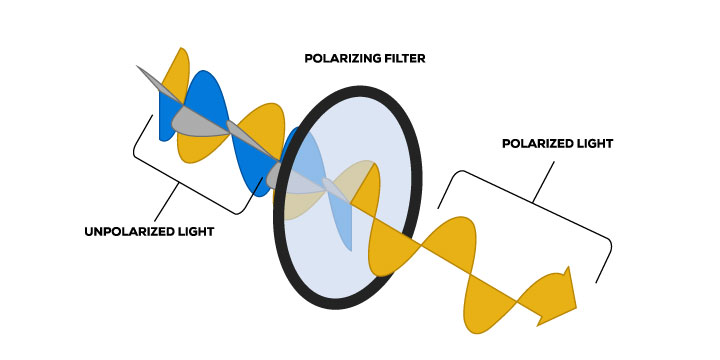
You’ve heard the term “polarized window film”, right? It’s a bit of an advertising gimmick. Technically, there is no such thing as polarization window film. But fret not. We will find you the right window film that will provide you with the results you need – without any promotional ploys.
Let’s break down how polarization works. This will help discern why window films do not provide this benefit and what window films you truly need to meet your requirements. Heat reduction, anti-glare, or tinted window films all have specific purposes and benefits. No two are exactly alike. With this stated, window films don’t polarize light.
What is polarization?
As we dissect polarization, consider your polarized sunglasses. They are designed to block light from a particular angle from breaking through. Without at least some light coming through you wouldn’t be able to drive with polarized sunglasses on. Nor would you be able to fly one of those snazzy jet planes like Tom Cruise in Top Gun.
However, polarization can completely block out light. A fun test is to take two pairs of polarized sunglasses, face them towards each other and move them at different angles until you find the “black spot”. This is why the term “polarization’ shouldn’t be applied to window glass film. In fact, window film blocks heat, light, and UV rays without polarization.

Most clients want to reduce glare or prevent heat from increasing the temperature within their building(s) or home. This is why there are so many options in window film. Circumstances such as a building’s orientation, the shape of that building, as well as the type of glass in the building all weigh into what type of window film would be best for that building.
In the graphic below you can see that the blue and grey waves of light are completely blocked from passing through the polarized filter. However, some light (the yellow) is still present. The colors of light in this graphic aren’t different wavelengths of light. Instead, they are simply light waves moving at a different angles. Thus, some of the light is blocked and some is not.

POLARIZED LIGHT
Window film
Now, when you are applying window film to glass doors or windows, the last thing you may want to do is block out all of your light– particularly with a car. How would you see to drive if all of your windows blocked out all of the light?
Yes, polarization is available in varying levels of “blockage”, particularly when it comes to sunglasses. However, the way polarization works is different than solar, anti-glare, or tinted window film. None of these window films attempt to block out all light waves at a certain angle. Instead, they allow in different types and angles of solar rays or light according to the type of ray (ultraviolet (UV), or Infrared (IR)) and what the window film was designed for. Consequently, there are numerous levels and types of window film. The same is true for anti-glare or tinted films, all of which are considered solar.
Anti-glare window tint
If you want to block those ugly glares from interfering with your laptop or fading interior furnishings, anti-glare window film may be your preference. It may help to note the difference between polarization and anti-glare window film is the level of light that still shines through a window. Anti-glare window film comes in different “levels” of light blockage and will allow in varying degrees and angles of light according to the level that you choose.
Heat control window film
This window film rejects solar heat. It is designed to reduce the amount of solar heat transmission through the glass. Infrared (IR) light is responsible for more than 50 percent of the sun’s heat getting inside. By blocking a large percentage of IR rays, you are in fact blocking the majority of heat exchange from entering your building. If this is your number one priority, heat control window film may be the best option for you.
Solar window film
There are three types of UV rays: UV-A, UV-B, and UV-C. UVA rays have the longest wavelengths, followed by UV-B. UV-C rays have the shortest wavelengths. While UV-A and UV-B rays are transmitted through the atmosphere, all UV-C and some UV-B rays are absorbed by the earth’s ozone layer.
There are numerous reasons to block out as many UV rays as possible from entering a large building. Skin damage or faded furnishings are examples.
Take the next step
The next time someone mentions “polarized window film tint” you can either call them out or smile to yourself. Now, you know the truth. As long as you know what you need – anti-glare or heat control window film, we can provide what you are looking for.
At NGS we take our role in educating the public seriously and we want to be sure our clientele understands what is truly happening with their window film choices. Still have questions? Reach out to one of our window film experts today. NGS offers a complimentary energy efficiency building modeling assessment that applies the orientation and shape of your building along with the climate in your region to determine the best window film for you. We are here to help, one building at a time.
Feature Photo by Scott Webb


